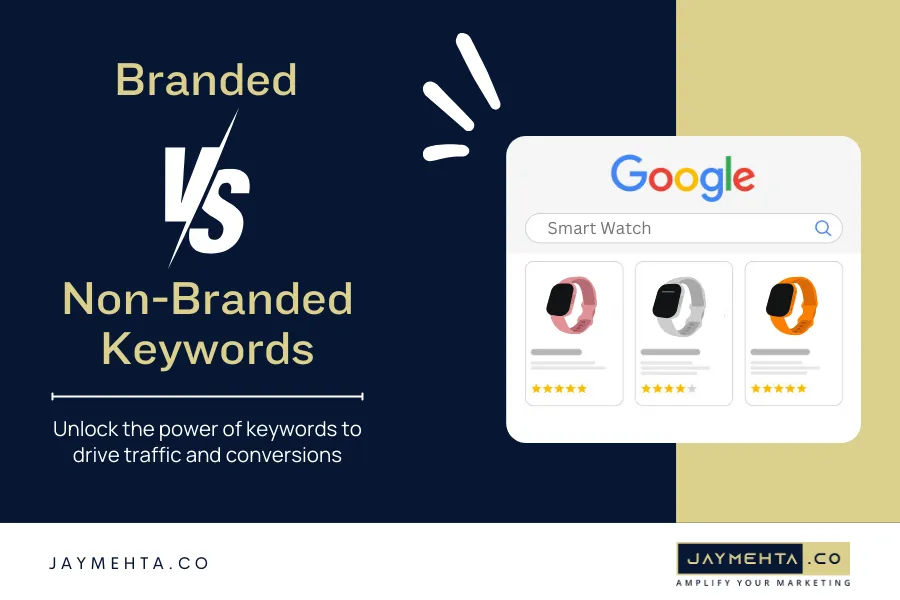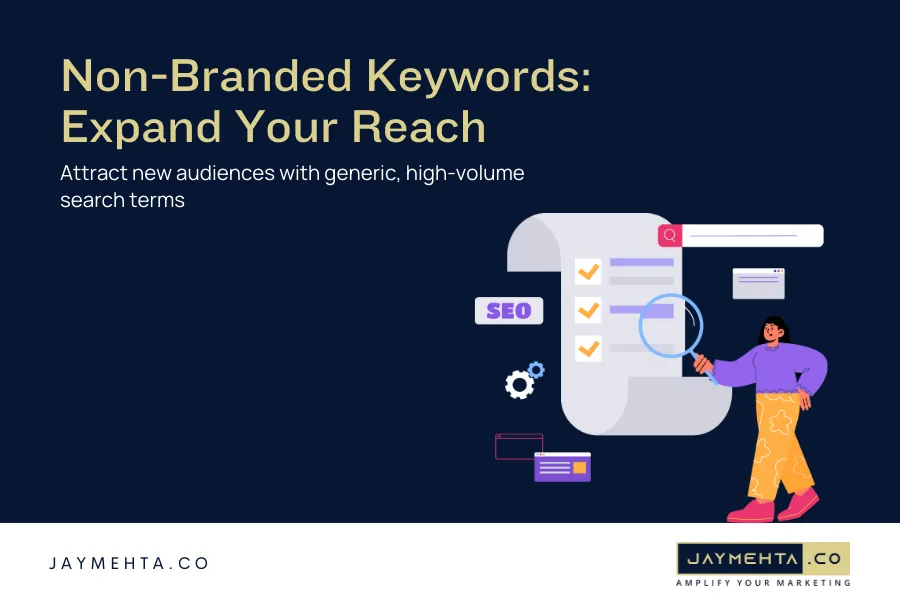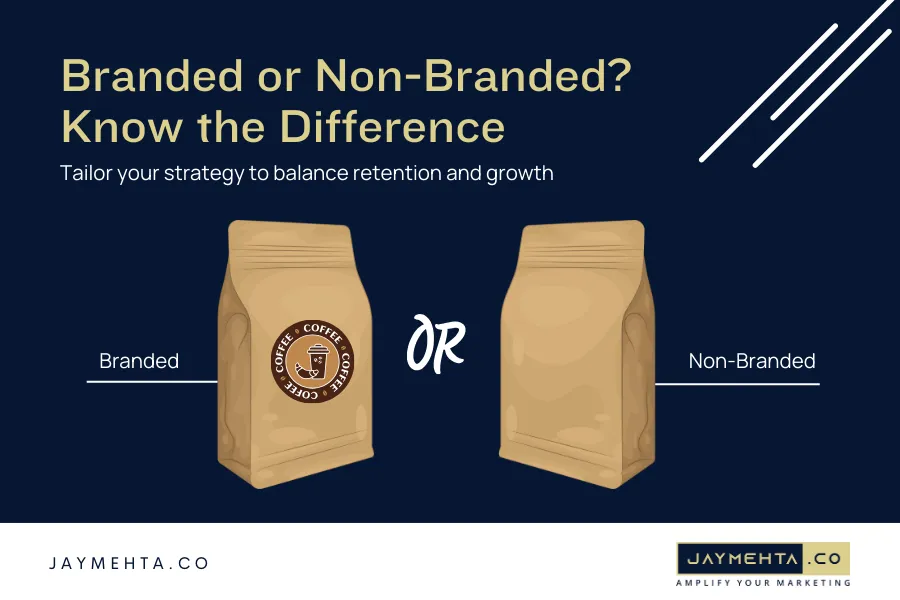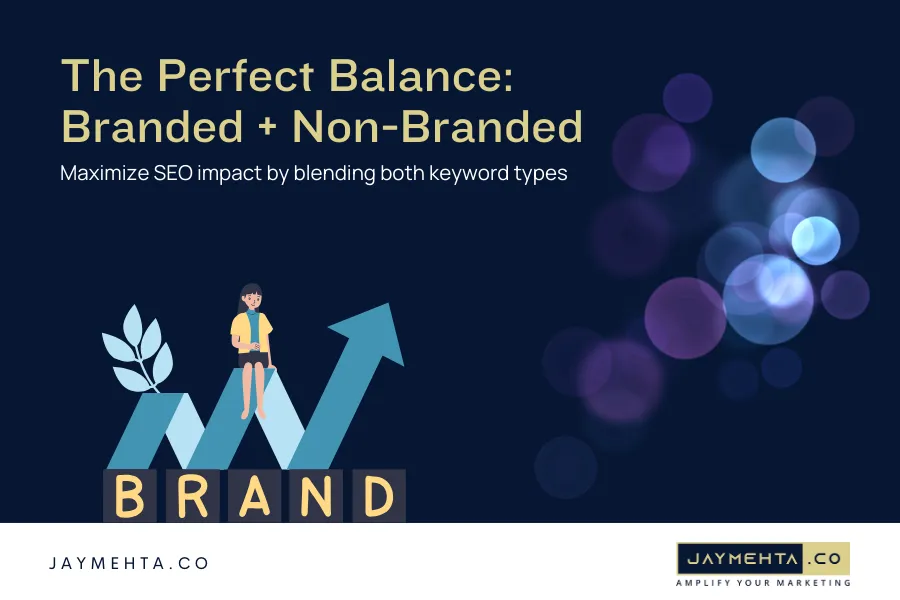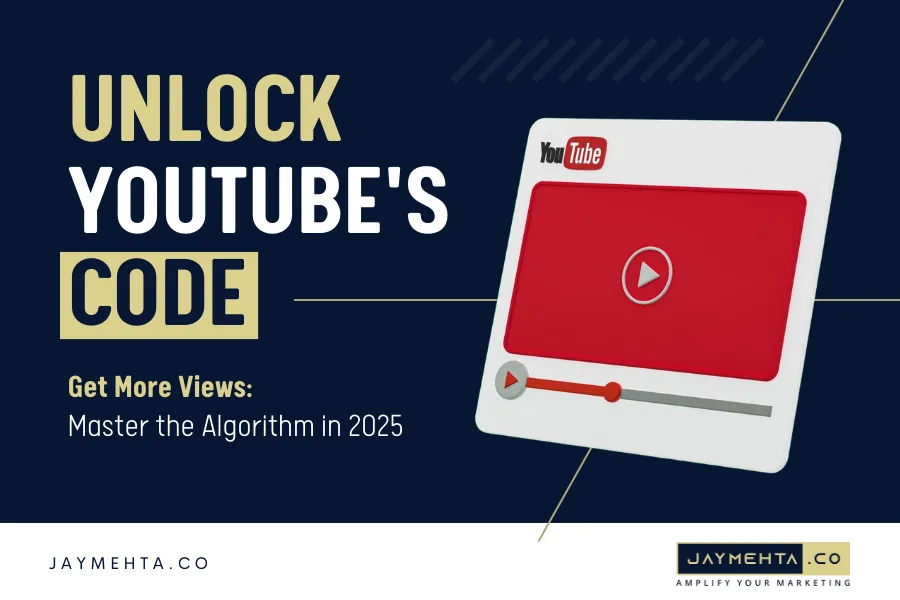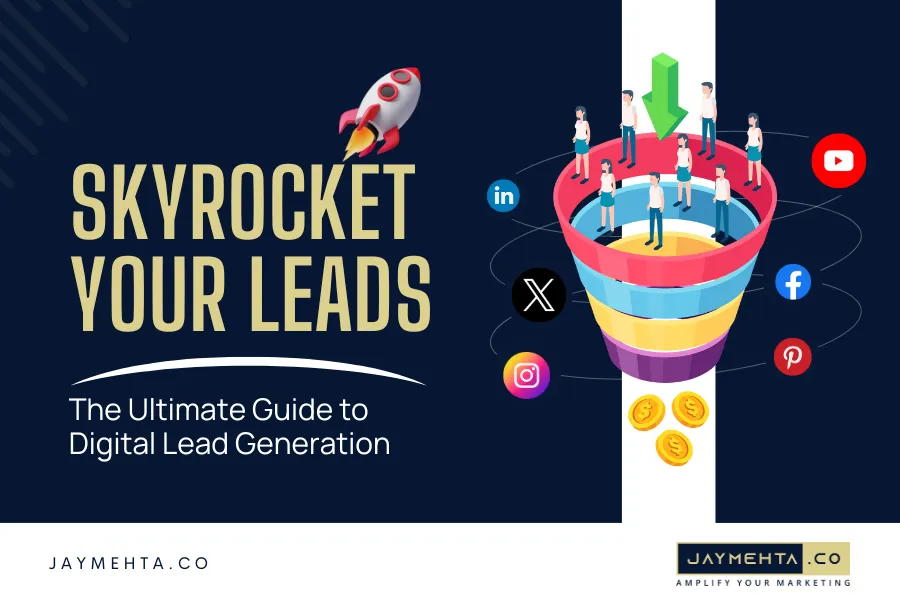In the ever-evolving realm of Search Engine Optimization (SEO) and digital marketing, a robust understanding of branded vs non-branded keywords is paramount for architecting a winning strategy. Think of them as the yin and yang of your SEO efforts, each playing a unique role in driving traffic, amplifying brand visibility, and ultimately, converting prospects into loyal customers. But how exactly do these two keyword types differ, and why should you care?
This isn’t just another guide; it’s your roadmap to SEO excellence. We’ll meticulously dissect what are branded keywords, shedding light on their purpose and value. Then, we’ll explore the vast potential of non-branded keywords, demonstrating how they can expand your reach to untapped audiences.
Along the way, we’ll equip you with actionable strategies and real-world examples to optimize both for maximum impact. Whether you’re a seasoned marketing guru or just starting your SEO journey, prepare to unlock new levels of success by mastering these fundamental keyword concepts.
Diving Deep: What Exactly are Branded Keywords?
Let’s peel back the layers and truly understand branded keywords. In essence, these are search queries that contain your company’s name or a recognizable variation thereof. They signal a direct interest in your business, your products, and your services.
Examples of Branded Keywords that Convert
- “Jay Mehta Digital SEO services”
- “Apple iPhone 16 release date”
- “Nike Air Max sale”
- “Tesla Model X price”
- “Amazon Prime benefits”
Why Branded Keywords Should be Your Best Friends:
-
Laser-Focused Intent
Individuals using these terms are often further down the sales funnel. They know you exist and are seeking specific information, making them prime candidates for conversion. Think of it as finding someone who’s already looking for you!
-
Dominate Your SERP Real Estate
Ranking highly for your branded terms allows you to control the narrative surrounding your brand in search results. You can ensure users see positive information and are directed to the most relevant pages on your site.
-
Fuel Customer Loyalty
Branded searches often come from existing customers seeking support, product information, or to make repeat purchases. Optimizing for these terms strengthens relationships and encourages brand loyalty.
For instance, by optimizing for “Jay Mehta Digital reviews,” Jay Mehta Digital ensures that potential clients are greeted with glowing testimonials, reinforcing trust and credibility. This builds confidence and encourages them to learn more about their services.
Unleashing Untapped Potential: Exploring Non-Branded Keywords
Now, let’s venture into the realm of non branded keywords. These are the broader, more generic search terms that don’t include your brand name. They represent a wider audience searching for solutions, products, or information related to your industry, even if they haven’t heard of you yet.
Examples of Non-Branded Keywords with Massive Reach
- “Best SEO company”
- “Affordable smartphone”
- “Running shoes for beginners”
- “Electric car reviews”
- “Online streaming services”
Why Non-Branded Keywords are Essential for Growth:
-
Expand Your Horizon
These terms are your gateway to reaching entirely new audiences who are unaware of your brand. Ranking for these terms puts you on the map and introduces you to potential customers you wouldn’t otherwise reach. It’s like opening a new store in a busy marketplace!
-
Tap into Higher Search Volume
Generic terms often boast significantly higher search volumes than branded ones, representing a massive pool of potential traffic
-
Establish Industry Authority
Consistently ranking for relevant non-branded keywords positions you as a leader in your industry, building trust and credibility with a wider audience.
The Showdown: Branded vs Non-Branded Keywords – Decoding the Key Differences
To truly harness the power of both keyword types, it’s crucial to understand their fundamental differences. Let’s break it down side-by-side to reveal their unique characteristics:
| Feature | Branded Keywords | Non-Branded Keywords |
|---|---|---|
| Search Intent | High – Users are actively seeking information about your specific brand. | Medium – Users are searching for a solution or product in your industry, generally. |
| Competition Level | Typically Low – You’re primarily competing with yourself and protecting your brand. | Often High – You’re competing with a multitude of businesses in your industry. |
| Traffic Volume | Lower – Limited to individuals already familiar with your brand. | Higher – Potential to attract a large and diverse audience. |
| Conversion Rate | Higher – Users are often further down the sales funnel and ready to convert. | Lower – Requires nurturing and building trust to convert unfamiliar users. |
| Primary Goal | Customer Retention, Brand Protection, and Direct Sales | Audience Acquisition, Brand Awareness, and Industry Authority. |
By recognizing these distinctions, you can strategically allocate your resources and tailor your messaging to resonate with each audience segment.
The Power of Branding: Weaving Branded Keywords into Your SEO Tapestry
Your brand is more than just a name; it’s the embodiment of your values, your promise, and your reputation. Strategically integrating branding keywords into your SEO is essential for solidifying your online presence and fostering customer loyalty.
Elevating Your Brand with Branded Keywords: Actionable Strategies
-
Optimize Your Core Pages
Ensure your homepage, product pages, and contact pages are optimized with relevant branded keywords in titles, meta descriptions, and body content.
-
Create a Dedicated “About Us” Page
Tell your brand story! Highlight your mission, values, and unique selling propositions, naturally incorporating your brand name throughout the content.
-
Encourage Reviews and Testimonials
Actively solicit customer reviews on platforms like Google, Yelp, and industry-specific review sites. Then, optimize these pages with phrases like “[Your Brand] reviews” to capture high-intent searches.
Defensive Strategies: Protecting Your Brand from Competitors
-
Run Branded PPC Campaigns
Don’t let competitors steal your traffic! Bid on your branded terms in Google Ads to ensure you consistently appear at the top of search results when users are looking for you.
-
Monitor Your Brand Mentions
Use tools like Google Alerts or Mention to track online conversations about your brand. Address any negative feedback promptly and proactively.
-
Secure Your Social Media Profiles
Claim your brand name on all relevant social media platforms, even if you don’t plan to actively use them all. This prevents competitors from impersonating you and confusing potential customers.
For instance, Jay Mehta Digital can ensure that searches for their name lead to positive and informative content by consistently using branding keywords across their website and marketing materials.
Expanding Your Reach: Mastering Non-Branded Keyword Optimization
While branded keywords are vital for nurturing existing relationships, non-branded keywords are your engine for growth. Mastering their optimization is crucial for attracting new customers and establishing your authority in the wider industry.
Unlocking Non-Branded Keyword Success: Proven Strategies
-
Deep Dive Keyword Research
Employ tools like SEMrush, Ahrefs, and Google Keyword Planner to identify high-volume, relevant non-branded keywords in your niche. Focus on keywords with a good balance of search volume and manageable competition.
-
Create Epic Content
Develop high-quality, informative content that genuinely addresses user needs and answers their questions. This could include blog posts, guides, videos, infographics, and more. Remember, content is king!
-
Target Long-Tail Keywords
Don’t just chase the broad, highly competitive terms. Focus on long-tail keywords – longer, more specific phrases that reflect a user’s unique intent. For example, instead of “SEO services,” target “affordable SEO services for small businesses in Mumbai.”
Example
By consistently publishing valuable content targeting non-branded terms like “digital marketing strategies,” you’re not only attracting new visitors to your website but also positioning yourself as a trusted authority in the industry. That’s why it is important to know what are branded keywords and how these should be optimized.
Read also: A Comprehensive Guide: How to Find Easy-to-Rank Keywords
The Art of Balance: Harmonizing Branded and Non-Branded Keywords for SEO Success
The true magic happens when you skillfully blend both branded terms and non branded terms into a cohesive SEO strategy. It’s about creating a synergistic effect where each type of keyword amplifies the power of the other.
ing Keyword Harmony: A Practical Guide
-
Diversify Your Content Strategy
Create a content mix that targets both branded and non-branded terms. Develop blog posts, case studies, and testimonials showcasing your brand’s unique value while also producing informative content that addresses broader industry topics.
-
Strategic Internal Linking
Link strategically between your branded and non-branded content. For example, in a blog post about “best digital marketing tools,” link to a page on your site detailing “[Your Brand]’s SEO services.” This helps users seamlessly navigate your website and discover your offerings.
-
Track and Analyze Performance
Regularly monitor your website traffic, keyword rankings, and conversion rates for both branded and non-branded terms. Use this data to refine your strategy and optimize your campaigns for maximum ROI.
Example
Jay Mehta Digital can allocate 60% of its SEO resources to non-branded keywords to attract new customers and 40% to branded keywords to reinforce its existing customer base.
Related Blog: Guide to Using the Power of SEO to Build Your Brand Awareness
Dodging the Bullets: Common Keyword Targeting Mistakes to Avoid
Even with a solid understanding of branded and non-branded keywords, it’s easy to fall into common traps that can derail your SEO efforts. Here are some pitfalls to steer clear of:
-
Ignoring Competitor Activity
-
The Trap
Failing to monitor whether competitors are bidding on your branded terms in Google Ads or using your brand name in their content.
-
The Solution
Regularly check your competitor’s ad campaigns and content strategy. If they are targeting your brand, take defensive measures like running your own branded PPC campaigns.
-
-
Neglecting Long-Tail Keywords:
-
The Trap
Focusing solely on broad, high-volume keywords while overlooking the potential of long-tail phrases.
-
The Solution
Conduct thorough keyword research to identify long-tail keywords that align with your target audience’s specific needs and queries.
-
-
Forgetting User Intent
-
The Trap
Creating content that doesn’t actually address what users are searching for when using specific keywords.
-
The Solution
Always consider the user’s intent behind each keyword. What are they hoping to find? Ensure your content provides a clear and satisfying answer to their query.
-
-
Overstuffing Keywords
-
The Trap
Cramming keywords excessively into your content in an unnatural way, sacrificing readability and user experience.
-
The Solution
Write naturally and focus on providing valuable information. Use keywords strategically and sparingly, ensuring they flow seamlessly within the text.
-
Real-World Success: A Case Study in Effective Keyword Integration
Let’s examine a real-world example of how a balanced keyword strategy can drive impressive results.
The Challenge
A mid-sized e-commerce company selling organic skincare products wanted to increase its online visibility and sales. They were struggling to attract new customers and were primarily relying on branded searches from existing clients.
The Solution
Jay Mehta Digital developed and executed a comprehensive SEO strategy that incorporated both branded and non-branded keywords:
-
Branded Keyword Optimization
-
Optimized product pages and the homepage with branded keywords like “[Brand Name] organic skincare” and “[Brand Name] natural beauty products.”
-
Launched a branded PPC campaign to capture high-intent searches and protect the brand from competitor bidding.
-
-
Non-Branded Keyword Targeting
-
Conducted extensive keyword research to identify high-volume, relevant non-branded terms like “organic skincare for sensitive skin,” “natural anti-aging products,” and “cruelty-free beauty brands.”
-
Created a series of blog posts, guides, and videos addressing these topics, providing valuable information and showcasing the brand’s expertise.
-
-
Content Integration
-
Strategically linked from the non-branded content to product pages, encouraging users to explore the brand’s offerings.
-
The Result
Within six months, the e-commerce company experienced:
- A 40% increase in organic traffic.
- A 25% boost in conversion rates.
- Significant growth in brand awareness, as measured by social media engagement and brand mentions.
This case study demonstrates the tangible impact of a well-balanced keyword strategy that leverages the strengths of both branded and non-branded terms.
Image Suggestion: A graph displaying the before-and-after results of a successful keyword strategy, showcasing increased traffic, engagement, and conversions.
The SEO Toolkit: Essential Resources for Keyword Optimization
To truly master the art of keyword optimization, you need the right tools at your disposal. Here’s a curated list of resources that will empower you to excel in both branded and non-branded keyword targeting:
-
Google Keyword Planner
A free tool from Google that helps you discover new keywords, analyze their search volume, and estimate traffic potential.
-
SEMrush
A comprehensive SEO platform that offers in-depth keyword research, competitor analysis, site audits, and more.
-
Ahrefs
Another powerful SEO tool with robust keyword research capabilities, backlink analysis, and content exploration features.
-
Moz Keyword Explorer
A user-friendly tool that helps you identify keyword opportunities and assess their difficulty.
-
Ubersuggest
A budget-friendly tool that provides keyword suggestions, content ideas, and competitor insights.
-
Google Search Console
A free tool that provides valuable data about your website’s performance in Google search results, including keyword rankings and click-through rates.
-
Yoast SEO Plugin
A popular WordPress plugin that helps you optimize your website content for specific keywords, ensuring proper on-page SEO.
-
Google Trends
A tool that allows you to explore the popularity of different search terms over time, helping you identify trending keywords and seasonal opportunities.
-
AnswerThePublic
A tool that helps you uncover questions and phrases that people are searching for related to your keywords, providing valuable content ideas.
-
Keywords Everywhere
A browser extension that displays keyword search volume and cost-per-click data directly in Google search results, making it easy to assess keyword potential.
With these tools in your arsenal, you’ll be well-equipped to conduct thorough research, analyze competitor strategies, and optimize your website for maximum keyword success.
Conclusion: Embrace the Power of Keyword Harmony and Watch Your SEO Soar!
You’ve now equipped yourself with the knowledge and strategies to master the art of branded vs non branded keywords. By understanding their unique roles, implementing effective optimization techniques, and avoiding common pitfalls, you’re well on your way to achieving SEO success. Remember the best path towards your business is to analyze and know what are branded keywords.
So, what are you waiting for? It’s time to unleash the power of keyword harmony, elevate your online presence, and watch your business soar!
Take Action Now: Ready to transform your SEO strategy and drive real results? Contact Jay Mehta Digital today for a free consultation. Let us help you craft a custom keyword strategy that aligns with your business goals and unlocks your full potential!
FAQs About Branded vs Non-Branded Keywords – Your Burning Questions Answered!
Let’s tackle some of the most frequently asked questions surrounding branded and non-branded keywords:
What are the simplest definitions of branded and non-branded keywords?
- Branded keywords: Terms that include your brand name.
- Non-branded keywords: Generic terms related to your industry.
Why should I care about branded keywords if people already know my brand?
They help you control your brand narrative, protect against competitors, and foster customer loyalty.
What's the best way to find non-branded keywords for my business?
Use keyword research tools to explore relevant terms with high search volume and manageable competition.
Is it okay if my branded keywords have low search volume?
Yes, because the intent is high and you’re targeting people who already know you.
What are some creative ways to use branded keywords?
Run contests or promotions featuring your brand name, create branded hashtags on social media, and encourage user-generated content.
How can I ensure my non-branded content is relevant to my brand?
Focus on topics that align with your expertise and target audience, subtly weaving in your brand’s unique value proposition.
Should I use the same keywords for my branded and non-branded campaigns?
No, they serve different purposes. Use branded terms for direct sales and customer retention, and non-branded terms for audience acquisition.
What are the biggest mistakes people make with branded keywords?
Ignoring competitor activity, neglecting long-tail variations, and not optimizing for user intent.
How often should I review my keyword strategy?
At least quarterly, as search trends and user behavior are constantly evolving.
Can a small business benefit from targeting both branded and non-branded keywords?
Absolutely! It’s essential for building a strong online presence and achieving sustainable growth.

